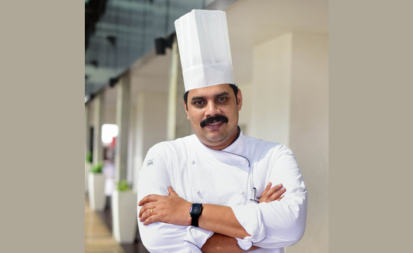A Return to the Home Kitchen: A Lifestyle Move Towards Home-Cooked Meals
Authored Article by Mahek Mody, Co-founder Up The last big thing that’s happened to food in India is actually on-demand Food Delivery - Diverse food, bottomless variety, Pasta on a Tuesday, all with incredible convenience. However,

Authored Article by Mahek Mody, Co-founder Up
The last big thing that’s happened to food in India is actually on-demand Food Delivery – Diverse food, bottomless variety, Pasta on a Tuesday, all with incredible convenience. However, Indians eventually yearn for home cooked meals, for some it’s every few days, others every few months and for some at least once a year. India’s food culture is synonymous with home-cooked meals.
In parallel, one of the more positive outcomes of the pandemic is that we now have a generation of people who have some experience tinkering with home cooked food – irrespective of gender. This has given rise to a new meaning to “Home cooked meals”.
Indians cook not because they have to but because they want to
In the world of abundance, people are cooking for themselves and their families because they feel it adds values, consistency, health and nutrition in their day to day. Cooking is a means of expressing care and contribution.
This means that what is being cooked and who is cooking is dramatically different. Quotes from real cooks from real kitchens, encapsulate the sentiment perfectly.
“While I make evening snacks, I catch up with my daughter about what happened in her school”
“Me and my husband cook together over the weekend, it‟s a fun activity, it‟s always something new”
“I engage my 12 year old in baking and cooking- it‟s like a life skill”
Women’s changing position in society
Political incorrectness of associating women with kitchens aside, the truth is that the evolution of Indian Kitchen is the biggest testimony to women’s changing role in society. While the onus of cooking is still largely borne by the woman whether it is cooking herself or supervising the help, men are stepping up and sharing the load increasingly and are very aware of the fact that they need to do their bit as well, whether it is helping with the weekly groceries or assisting their partners in whatever way they can.
Between the pandemic and the rise of food content, more men are learning to cook and taking a more active role within the kitchen. This is a large segment of prospective users who have been historically ignored by most Food and Kitchen brands, but are now taking a part in moulding what will be eaten everyday at home. Modern equipment like smart cooking assistants designed to help beginner cooks are easing the transition.
The food influencer has influence
Consumption of food related media content is at an all time high. People are seeing new and interesting food as well as variations on food they are already eating everyday on Social Media, Movies and TV Shows. Friends and relatives are talking about the food they have been trying both at home and at restaurants. Food delivery ecosystem has made this food accessible and changed palettes. Eating the same food seven times a week is boring. Pani Puri, Momos and Pastas eaten at home on a Tuesday are normal.
The rise of the 24 year old Salad Lover
Mainstream conversations around nutrition and health have changed our approach to daily food, especially with a younger audience. Health starts with home cooked food, but has moved beyond that. Keto, Low carb, Low fat, Intermittent Fasting have sent both younger and older consumers irrespective of gender into the kitchen.
“You can‟t ask your cook „Lower my carbs tomorrow‟, you have to learn how to cook this yourself.”
The grocery ecosystem has also evolved to address this demand – organic food, high quality processed and clean vegetables, premix masalas and sauces have made diets easy and accessible.
Democratisation of the kitchen
Bringing together fun, food and family, today’s kitchen is both a personal and social space. While kitchens of the past were designed around traditional housewives, modern kitchens have contributions from husbands who want to step up, dads wanting to set examples for their daughters, and bachelors who experiment with food. In fact, post pandemic, it’s perfectly acceptable for kids to make their own Maggi.
All of these factors mean the kitchen and what home food is is changing rapidly. Modern equipment is more common, air fryers, ovens and smart cooking assistants have begun to acquire their place of pride in Indian kitchens.
Adding to all these obvious benefits is also the role that the pandemic played in getting people to cook at home. In fact, during the pandemic, surveys showed that nearly 70% of people were inclined to continue to cook at home. The same survey also revealed that this habit is being driven by the rise in the number of creative and confident home cooks and the added advantages of home cooking helping to save money (67%), eat healthier (56%) and feel good (56%).1
Furthermore, the traditional arguments against cooking being tedious and cumbersome are being challenged by dynamic startups who are creating smart connected cooking appliances. Such new-age devices come with step-by-step instructions and recipes, how-to videos, and cooking presets that are perfect for Indian home cooking. The case for home cooking has never been stronger.
—-
 English
English French
French German
German Italian
Italian



